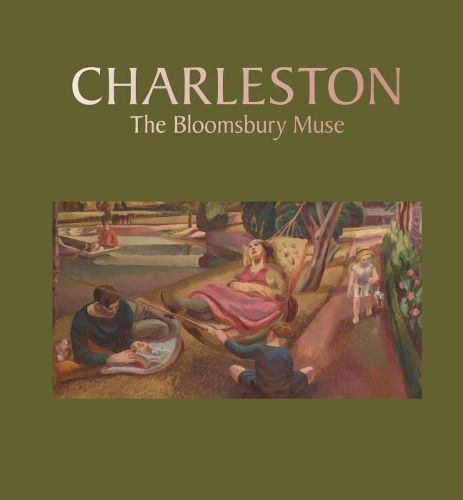Readings Newsletter
Become a Readings Member to make your shopping experience even easier.
Sign in or sign up for free!
You’re not far away from qualifying for FREE standard shipping within Australia
You’ve qualified for FREE standard shipping within Australia
The cart is loading…






Accompanying an exhibition at Philip Mould & Company, this lavish catalogue tells the story of Vanessa Bell and Duncan Grant’s enduring attachment to their home at Charleston Farmhouse, and showcases the work the artists produced between the two world wars. This stunning collection of artwork is beautifully presented alongside illuminating, illustrated essays, an interview and complete catalogue. Vanessa Bell and Duncan Grant’s enduring attachment to their home at Charleston Farmhouse, its idyllic surroundings, and constant fl ow of visitors can be witnessed through their art. Beginning with radical modern works influenced by European trends - from painted furniture to depictions of food preparation in the kitchen, from the barns to the pond, the people to the household cat - this catalogue tells a story of over thirty years of astonishing artistic productivity. Charleston was not just the Bloomsbury Group’s country retreat but a venue for their progressive social self-expression. It was also a family home. Focusing on Vanessa and Duncan’s most productive years of creativity, between and including two world wars, this catalogue will explore how Charleston fed their artistic impulses and ideas to produce a glorious canon of art. AUTHORS: Philip Mould is an internationally renowned art dealer and specialist in British portraiture. He regularly appears on the BBC and has authored two books on art discovery. Darren Clarke is the Head of Collections, Research and Exhibitions at The Charleston Trust. Deborah Gage is an art dealer, agent and consultant. Lawrence Hendra is an art historian and art dealer. In 2019 he edited Divine People: The Art and Life of Ambrose McEvoy. Richard Shone is an art historian and former editor of The Burlington Magazine who has published extensively on The Bloomsbury Group and is considered the leading specialist in this fi eld of study.
50 illustrations
$9.00 standard shipping within Australia
FREE standard shipping within Australia for orders over $100.00
Express & International shipping calculated at checkout
Accompanying an exhibition at Philip Mould & Company, this lavish catalogue tells the story of Vanessa Bell and Duncan Grant’s enduring attachment to their home at Charleston Farmhouse, and showcases the work the artists produced between the two world wars. This stunning collection of artwork is beautifully presented alongside illuminating, illustrated essays, an interview and complete catalogue. Vanessa Bell and Duncan Grant’s enduring attachment to their home at Charleston Farmhouse, its idyllic surroundings, and constant fl ow of visitors can be witnessed through their art. Beginning with radical modern works influenced by European trends - from painted furniture to depictions of food preparation in the kitchen, from the barns to the pond, the people to the household cat - this catalogue tells a story of over thirty years of astonishing artistic productivity. Charleston was not just the Bloomsbury Group’s country retreat but a venue for their progressive social self-expression. It was also a family home. Focusing on Vanessa and Duncan’s most productive years of creativity, between and including two world wars, this catalogue will explore how Charleston fed their artistic impulses and ideas to produce a glorious canon of art. AUTHORS: Philip Mould is an internationally renowned art dealer and specialist in British portraiture. He regularly appears on the BBC and has authored two books on art discovery. Darren Clarke is the Head of Collections, Research and Exhibitions at The Charleston Trust. Deborah Gage is an art dealer, agent and consultant. Lawrence Hendra is an art historian and art dealer. In 2019 he edited Divine People: The Art and Life of Ambrose McEvoy. Richard Shone is an art historian and former editor of The Burlington Magazine who has published extensively on The Bloomsbury Group and is considered the leading specialist in this fi eld of study.
50 illustrations